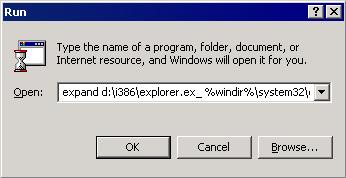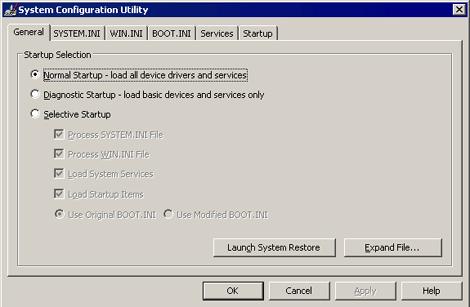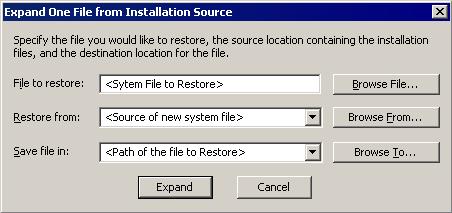TROJ_CRILOCK.AB
Trojan:Win32/Crilock.A (Microsoft)
Windows 2000, Windows Server 2003, Windows XP (32-bit, 64-bit), Windows Vista (32-bit, 64-bit), Windows 7 (32-bit, 64-bit)


Threat Type: Trojan
Destructiveness: No
Encrypted: Yes
In the wild: Yes
OVERVIEW
This Trojan arrives on a system as a file dropped by other malware or as a file downloaded unknowingly by users when visiting malicious sites.
It modifies the Internet Explorer Zone Settings.
It deletes the initially executed copy of itself.
TECHNICAL DETAILS
Arrival Details
This Trojan arrives on a system as a file dropped by other malware or as a file downloaded unknowingly by users when visiting malicious sites.
Installation
This Trojan drops the following copies of itself into the affected system and executes them:
- %User Profile%\Application Data\{Encrypted GUID}.exe (set to hidden)
(Note: %User Profile% is the current user's profile folder, which is usually C:\Documents and Settings\{user name} on Windows 2000, XP, and Server 2003, or C:\Users\{user name} on Windows Vista and 7.)
It adds the following mutexes to ensure that only one of its copies runs at any one time:
- Local\{GUID}
- Global\{GUID}
Autostart Technique
This Trojan adds the following registry entries to enable its automatic execution at every system startup:
HKEY_CURRENT_USER\Software\Microsoft\
Windows\CurrentVersion\Run
CryptoLocker = %User Profile%\Application Data\{Encrypted GUID}.exe"
Other System Modifications
This Trojan adds the following registry keys:
HKEY_CURRENT_USER\Software
CryptoLocker =
Web Browser Home Page and Search Page Modification
This Trojan modifies the Internet Explorer Zone Settings.
Other Details
This Trojan encrypts files with the following extensions:
- .accdb
- .arw
- .bay
- .cdr
- .cer
- .crt
- .crw
- .dbf
- .dcr
- .der
- .dng
- .doc
- .docm
- .docx
- .dwg
- .dxf
- .dxg
- .eps
- .erf
- .indd
- .jpe
- .jpg
- .kdc
- .mdb
- .mdf
- .mef
- .mrw
- .nef
- .nrw
- .odb
- .odc
- .odm
- .odp
- .ods
- .odt
- .orf
- .pdd
- .pef
- .pem
- .pfx
- .ppt
- .pptm
- .pptx
- .psd
- .pst
- .ptx
- .raf
- .raw
- .rtf
- .rwl
- .srf
- .srw
- .wpd
- .wps
- .xlk
- .xls
- .xlsb
- .xlsm
- .xlsx
It deletes the initially executed copy of itself
NOTES:
This malware tries to connect to following URLs in order to get the key for file encryption.
- http://{Pseudo-Random Domain}.biz
- http://{Pseudo-Random Domain}.ru
- http://{Pseudo-Random Domain}.net
- http://{Pseudo-Random Domain}.info
- http://{Pseudo-Random Domain}.co.uk
- http://{Pseudo-Random Domain}.com
- http://{Pseudo-Random Domain}.org
It demands users to pay a fine via any of the following payment methods:
- Bitcoin
- MoneyPak
It encrypts files using a complex encryption routine. This prevents users from restoring the encrypted files.
It displays the following image containing the ransom message:

SOLUTION
Step 1
Before doing any scans, Windows XP, Windows Vista, and Windows 7 users must disable System Restore to allow full scanning of their computers.
Step 2
Restart in Safe Mode
Step 3
Delete this registry value
Important: Editing the Windows Registry incorrectly can lead to irreversible system malfunction. Please do this step only if you know how or you can ask assistance from your system administrator. Else, check this Microsoft article first before modifying your computer's registry.
- In HKEY_CURRENT_USER\Software\Microsoft\Windows\CurrentVersion\Run
- CryptoLocker = %User Profile%\Application Data\{Encrypted GUID}.exe
- CryptoLocker = %User Profile%\Application Data\{Encrypted GUID}.exe
Step 4
Delete this registry key
Important: Editing the Windows Registry incorrectly can lead to irreversible system malfunction. Please do this step only if you know how or you can ask assistance from your system administrator. Else, check this Microsoft article first before modifying your computer's registry. Before you could do this, you must restart in Safe Mode. For instructions on how to do this, you may refer to this page If the preceding step requires you to restart in safe mode, you may proceed to edit the system registry.
- In HKEY_CURRENT_USER\Software
- CryptoLocker = ""
- CryptoLocker = ""
Step 5
Restart in normal mode and scan your computer with your Trend Micro product for files detected as TROJ_CRILOCK.AB. If the detected files have already been cleaned, deleted, or quarantined by your Trend Micro product, no further step is required. You may opt to simply delete the quarantined files. Please check this Knowledge Base page for more information.
Step 6
Restore a file/s that has/have been corrupted/modified by this malware/grayware
To restore system files:
• For Windows 2000:
- Insert your Windows 2000 Installation CD in your CD-ROM drive.
- Click Start>Run.
- In the Open text box, type the following then click OK:
expand D:\i386\{file to restore}.ex_ %windir%\system32\{file to restore}.exe

• For Windows XP and Windows Server 2003:
- Click Start>Run.
- In the Open text box, type the following then click OK:
MSCONFIG - Make sure that the option Normal startup - load all device drivers and services option is selected.
- Click the Expand button.
- In the dialog box that appears, type the following:
- File to restore contains the path and file name of the file you wish to restore.
- Restore from contains the path to the Windows CAB files. This path may vary from machine to machine. It may be in a local drive, in a network drive, or in a CD-ROM. In the local drive, it is usually in C:\WINDOWS\OPTIONS\INSTALL.
- Save file in contains the path of the file you wish to restore (Do not include the file name).
- Click the Expand button.



Did this description help? Tell us how we did.


